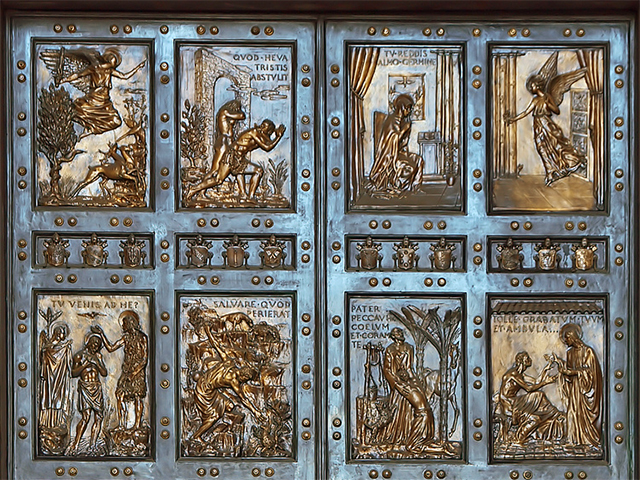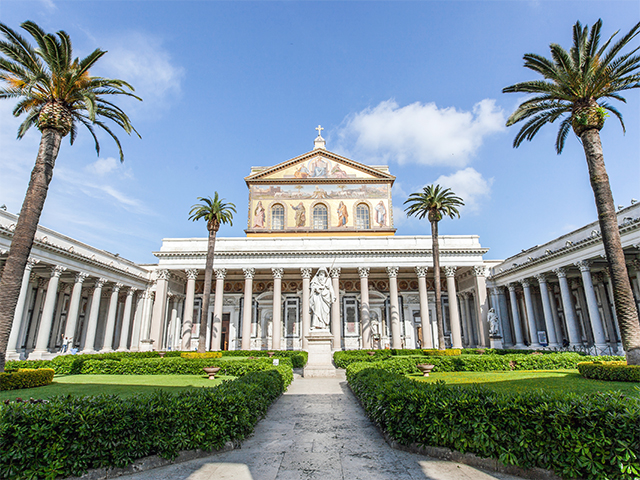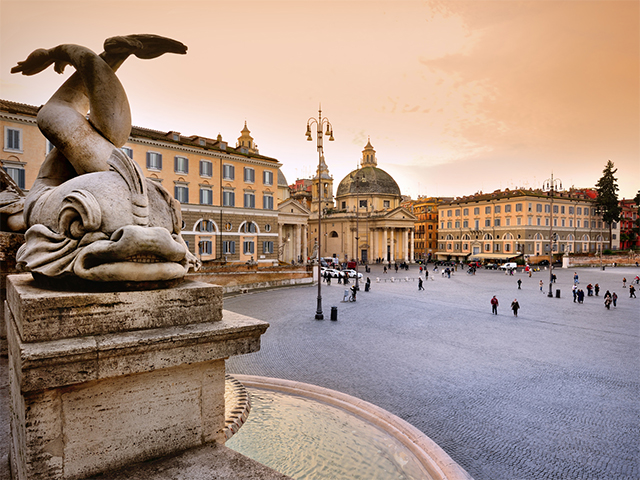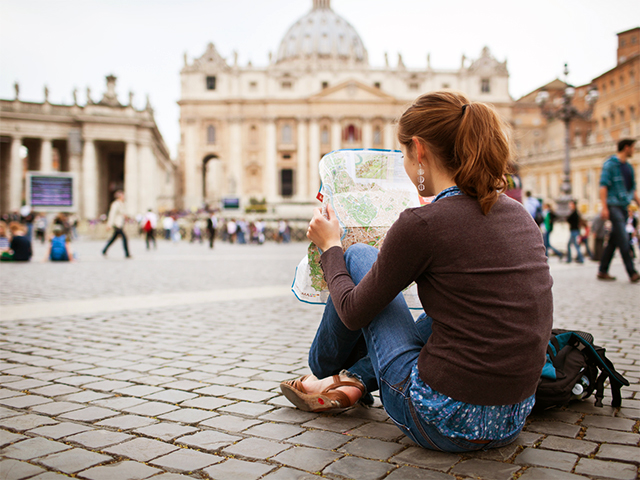Roma in 3 days: second day
Second part of the itinerary to visit Rome in three days and experience an unforgettable weekendLENGTH

9-10 hours
Difficulty
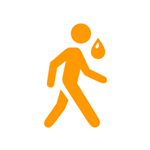
Medium
Budget

Medium
Route stops
- Vatican Museums
Vatican Museums: useful information about opening hours, ticket office, bookings, how to get in for free, how to skip the line and much more about the world's largest art collection.
- The Sistine Chapel
Visit Michelangelo's Sistine Chapel! Opening times, reservations and useful tips to to discover this incredible masterpiece.
- Basilica of St. Peter in the Vatican
Everything about the Basilica of St. Peter: history, art, the Pietà by Michelangelo, the dome and so many useful informations about opening hours, tickets and how to get there.
- St. Peter's Square
Description and useful information about St. Peter's Square, the square of the Basilica of Rome.
- Vist and discover Castel Sant'Angelo in Rome
Opening hours, ticket prices and useful information to visit Castel Sant'Angelo in Rome.
Vatican Museums: useful information about opening hours, ticket office, bookings, how to get in for free, how to skip the line and much more about the world's largest art collection.
Visit Michelangelo's Sistine Chapel! Opening times, reservations and useful tips to to discover this incredible masterpiece.
Everything about the Basilica of St. Peter: history, art, the Pietà by Michelangelo, the dome and so many useful informations about opening hours, tickets and how to get there.
Description and useful information about St. Peter's Square, the square of the Basilica of Rome.
Opening hours, ticket prices and useful information to visit Castel Sant'Angelo in Rome.
FIRST DAY | SECOND DAY | THIRD DAY
If you are here, you will have probably read the first two articles of the route "Visiting Rome in 3 days". If you haven't done it yet, click on the links above.
ROMA PASS 72 HOURS
1. Today we will enter in the Vatican City, headquarters to the Holy Roman Church, which counting less than 1,000 inhabitants is the smallest state in the world. Here you can find one the world's biggest art collections. We are talking right about the Vatican Museums, unmissable stop of the day!
Visiting the Vatican Museums is one of those experiences that you should try at least once in your life! Getting to the entrance of the museum is very easy, you just need to get off at the Cipro-Musei Vaticani metro stop (line A).
DISCOVER ALL THE TOURS ON THE VATICAN MUSEUMS
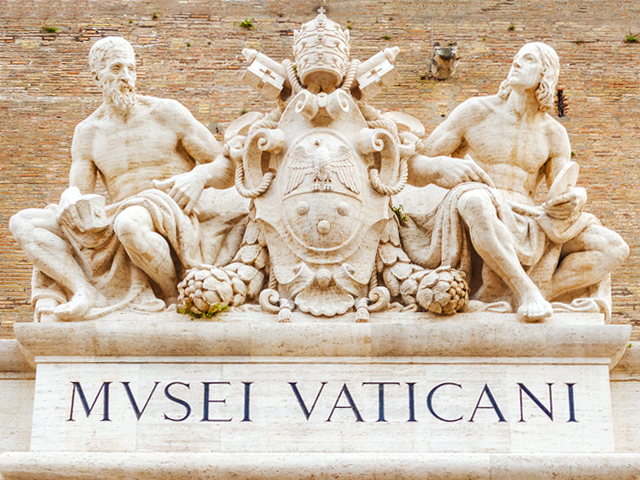
Vatican Museums
A long trip through over twenty centuries of art and history in an ever-accelerating sequence of emotions that will leave you speechless. But what to see at the Vatican Museums?
With over 70,000 objects displayed,you will understand that seeing everything in a single visit is simply impossible! No doubt much depends on the time you can spend there, but we recommend to choose first what to see in order to avoid wasting unnecesarily your time and losing the will to go back.
Lucky for you we have prepared a series of useful advice to organize at best your visit. In the meanwhile, read also our article called 7 Things to See in the Vatican Museums.
- Book online your ticket and skip the line! Extra €4 are really worth it! How? Click here.
- Choose first what you wouldl like to see: if you need help, read this article.
- Dress appropriately! The Vatican has its own dress code: knees and shoulders must be covered as a sign of respect.
- Wear comfortable shoes and take with you a small backpack with snacks and water.
- Bring along a camera: except in the Sistine Chapel, you can take pictures in most of the rooms in the interior of the museums. You will find signs indicating when the use of the flash is allowed.
2. The Sistine Chapel is located at the end of the visit to the Vatican Museums and can be accessed from the imposing Sala Regia.
Michelangelo Buonarroti devoted almost 10 years of his life to complete the frescos that cover the vault, like the famous Creation of Adam and the huge Last Judgement that fills the wall of the altar. Absolute art masterpieces, loved and well-known worlwide.
The chapel is also known for being the official site for the Conclave, that is, the room where cardinals gather to chose the new Pope.
Read our article about the Sistine Chapel to find out more about its history, anecdotes and curiosities.
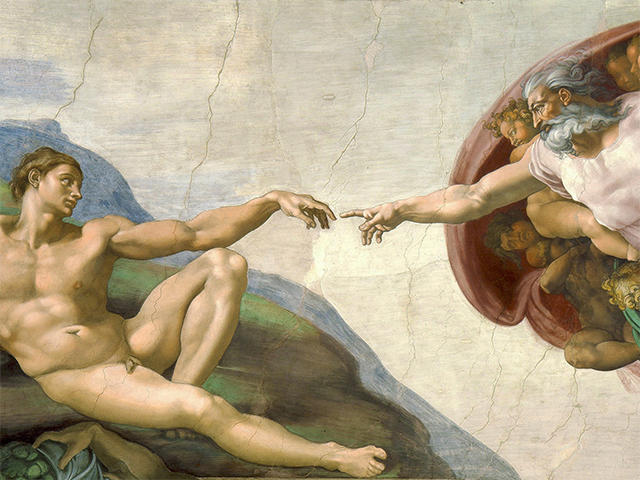
The Sistine Chapel
3. To leave the Vatican Museums you can go down the famous helical staircase designed by Giuseppe Momo or go through a secret passage that will lead you directly to the Basilica of St. Peter. In theory this door is exclusively for group visits, but it is often left open for all visitors. If you manage you go through it, you will save a great deal of time.
The Basilica of St. Peter, apart from being a great work of art itself, it is also a huge container of art. Just think that in over a century, many architects have worked on it, like Bramante, Raffaello, Antonio da Sangallo the Younger, Peruzzi, Michelangelo, Giacomo della Porta and Maderno.
GUIDED VISIT TO THE BASILICA OF ST. PETER
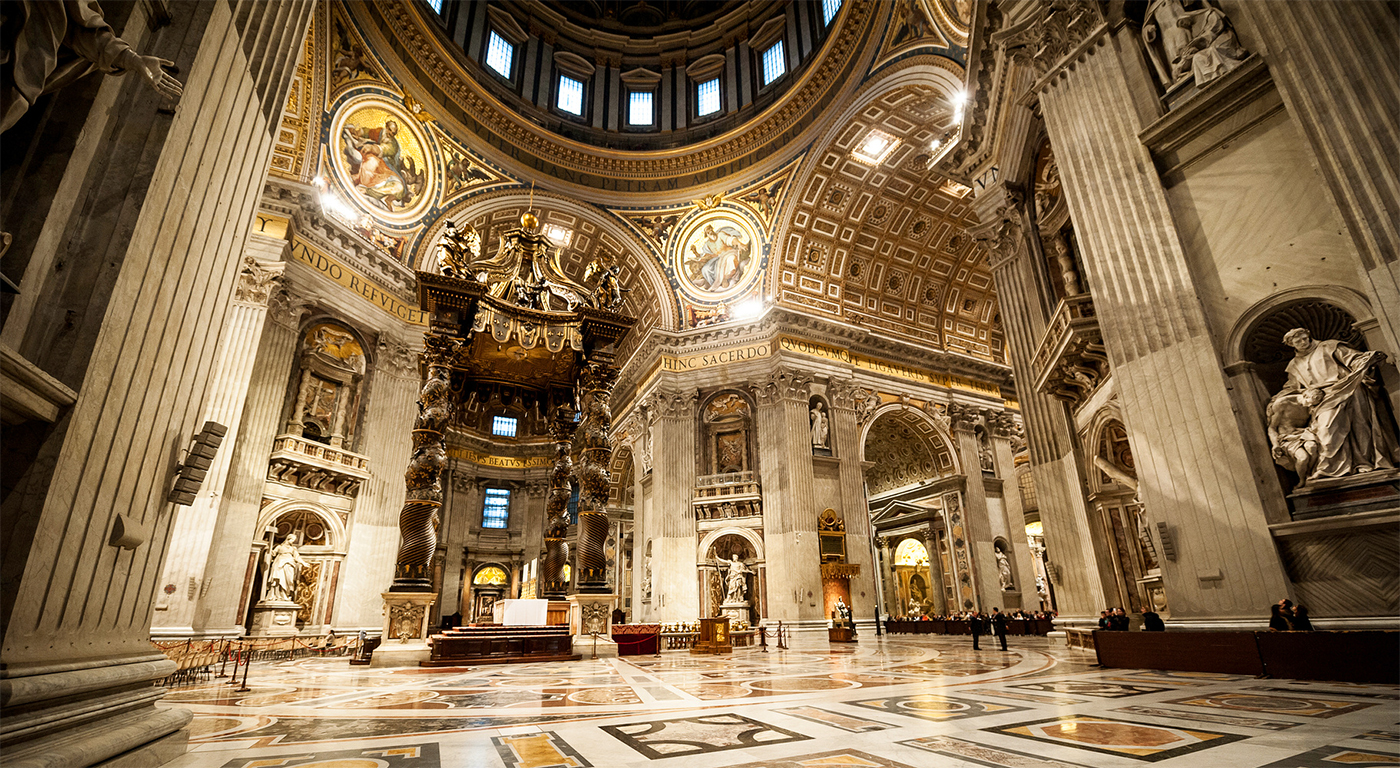
The interior of the Basilica of St. Peter
Inside the Basilica are kept an astounding amount of works of art, like the famous Pietà by Michelangelo and the wonderful Baldachin of St. Peter. You should not miss either the bronze statue of St. Peter, the Tomb of Leon XI, the monument to Pius VII, the Tomb of Alexander VII, the Vatican Grottoes below the Basilica, where the Tomb of Paul II can be found, the octagonal rooms, the organ and many other marble statues of saints and eminent personalities.
Leaving the Basilica, on your right, you will find the steps leading to the Dome, symbol of the Basilica and of Rome. Climb all the 551 steps (€5) to get on top, or take the lift (€7) that will get you up to the terrace, from where you can continue climbing the 320 steps left by foot.
Once you reach the Basilica's highest point, you will be rewarded by a fantastic panoramic view over Rome, with St. Peter's Square, Castel Sant’Angelo and the Tiber River in the background.
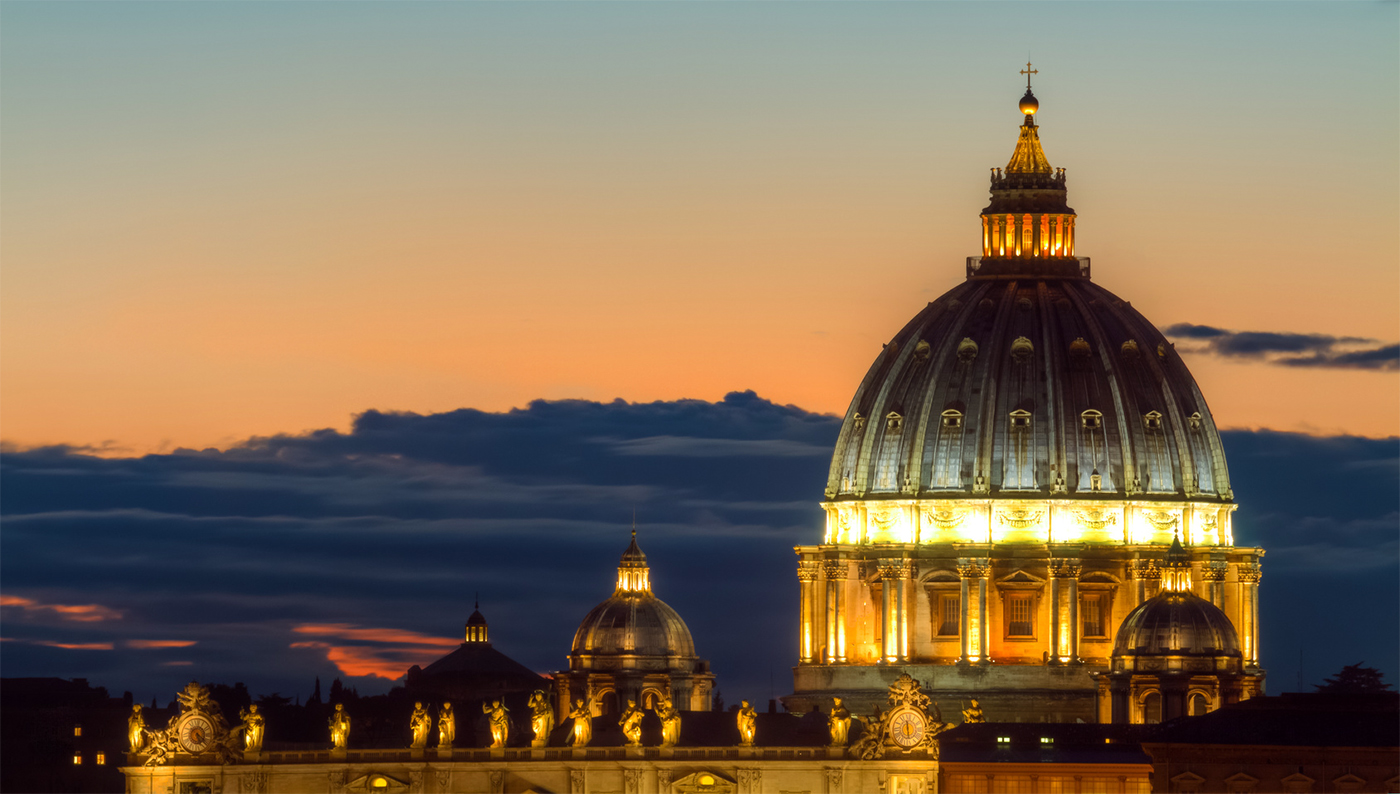
St. Peter's Dome
4. St. Peter's Square is really an architectural masterpiece created by the genious Gian Lorenzo Bernini: a huge 240 meter ellipse that, with its colonnade, symbolically embraces all the faithful.
At the center of the square rises the Vatican Oblelisk, which stands out supported by four bronze lions at its basement. Corresponding to the two focuses of the ellipse, there are two fountains.
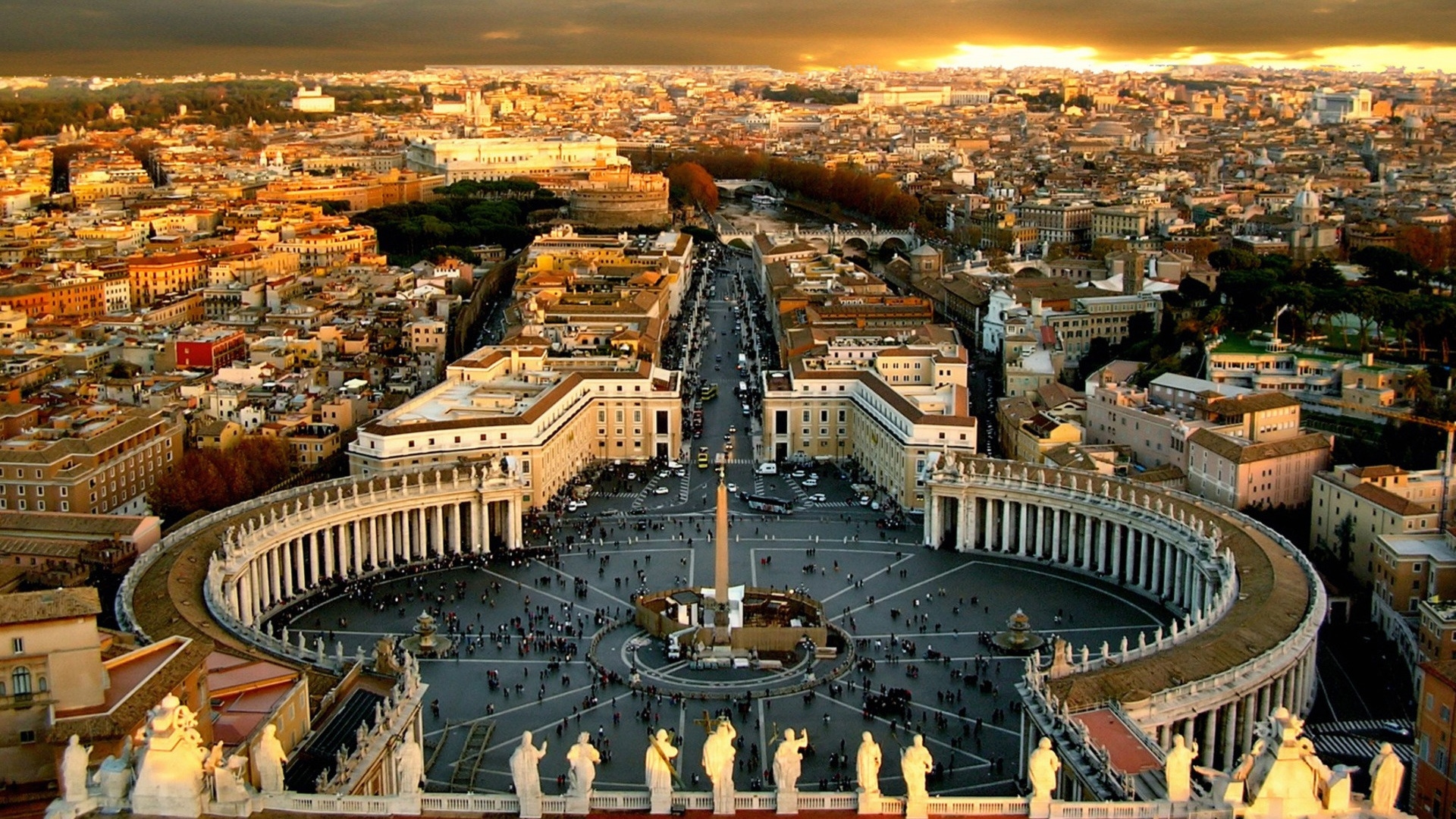
A spectacular view of St. Peter's Square from above
The whole square is about 340 meters wide and the ellipse has a 240-meters arch. The ellipse is partially closed in both sides by the colonnades formed by 284 columns and 88 pilars. Over the balustrades on top of every colonnade there are 140 statues representing many Catholic saints. Finally, at the base of the great steps that bring to the basilica, there are two big statues of St. Peter and St. Paul represented in the act of waving at the faithful.
We are going to reveal a little secret here: close to the obelisk, from a stone placed at the paving of the square you will have the impression that there may actually be a single row of columns instead of four, since they are perfectly aligned.
Find out more reading our article about the square.
5. Leave now St. Peter's Square to reach the last stop of the day.
Go towards Via della Conciliazione, among peddlers, souvenir sellers, tour operators and panoramic buses, the street is always teeming with people. Turn around for a last greeting to the Basilica and continue straight. As you get closer, you will see how the imposing building of Castel San'Angelo grows bigger in front of you.
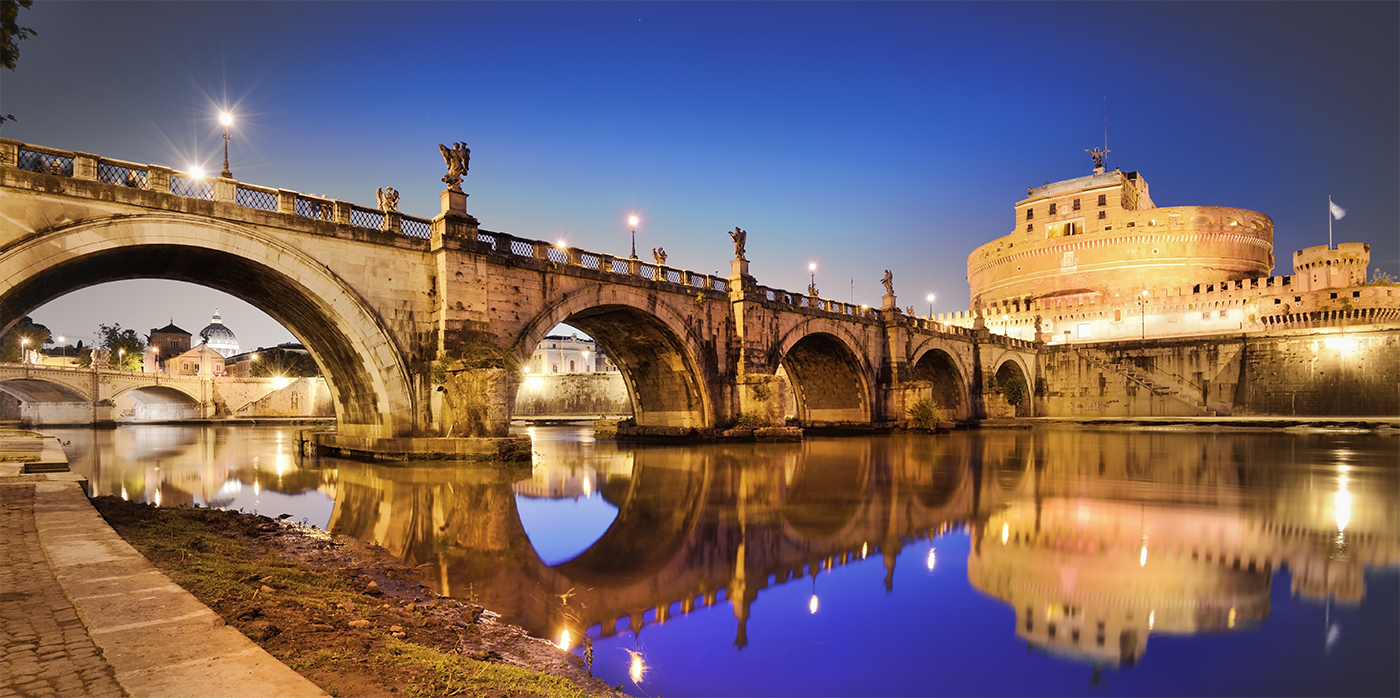
Castel Sant'Angelo and Ponte dell'Angelo
Initially built to be emperor Hadrian's funeral mausoleum, this fortress is site to the National Museum of Castel Sant' Angelo housing art and history collections: sculpture, paintings, marble findings, arms, furniture and various objects.
The stories and legends told about this misterious building are many since it has always been fascinating. Did you know that there's a "secret" passage directly linking the castle to the Vatican city? Read our article about Castel San'Angelo to find out more!
And also this second Roman day is approaching its end! Before saying goodbye, we recommend you to read the article getting around Rome to easily known how to get back to your accomodation.
Are you ready for the third and final day? Click on the link below to find out.



 PORT MOBILITY CIVITAVECCHIA
PORT MOBILITY CIVITAVECCHIA









